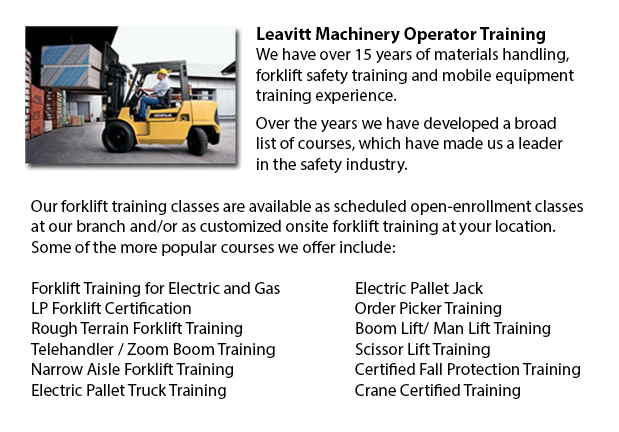
Aerial Lift Training Guelph - Aerial forklifts might be used to accomplish certain distinctive tasks executed in hard to reach aerial places. Some of the tasks associated with this kind of jack include performing routine maintenance on structures with high ceilings, repairing phone and utility cables, lifting burdensome shelving units, and pruning tree branches. A ladder could also be used for many of the aforementioned jobs, although aerial lifts offer more security and stability when correctly used.
There are several models of aerial hoists accessible on the market depending on what the task needed involves. Painters often use scissor aerial hoists for example, which are grouped as mobile scaffolding, handy in painting trim and reaching the 2nd story and above on buildings. The scissor aerial hoists use criss-cross braces to stretch out and lengthen upwards. There is a table attached to the top of the braces that rises simultaneously as the criss-cross braces lift.
Container trucks and cherry pickers are a different variety of aerial lift. They contain a bucket platform on top of an extended arm. As this arm unfolds, the attached platform rises. Forklifts use a pronged arm that rises upwards as the handle is moved. Boom lift trucks have a hydraulic arm that extends outward and hoists the platform. Every one of these aerial hoists call for special training to operate.
Through the Occupational Safety & Health Association, also labeled OSHA, training courses are on hand to help make sure the employees meet occupational standards for safety, machine operation, inspection and maintenance and machine load capacities. Employees receive qualifications upon completion of the course and only OSHA certified employees should operate aerial platform lifts. The Occupational Safety & Health Organization has formed guidelines to uphold safety and prevent injury when utilizing aerial hoists. Common sense rules such as not utilizing this apparatus to give rides and ensuring all tires on aerial hoists are braced in order to hinder machine tipping are observed within the rules.
Sadly, data illustrate that in excess of 20 operators pass away each year while working with aerial lift trucks and 8% of those are commercial painters. The majority of these mishaps are due to inappropriate tire bracing and the lift falling over; for that reason several of these deaths were preventable. Operators should make certain that all wheels are locked and braces as a critical safety precaution to prevent the device from toppling over.
Additional suggestions include marking the encircling area of the machine in a visible manner to protect passers-by and to ensure they do not come too close to the operating machine. It is vital to ensure that there are also 10 feet of clearance between any utility cables and the aerial hoist. Operators of this machinery are also highly recommended to always wear the appropriate security harness while up in the air.
-
Boom Trucks
Boom Trucks Training Guelph - Boom truck are often applied by phone, cable and utilities companies as they have long folded arms which are typically folded over the roofs of company vans. On the end of the extension of extendable arms more often than... More -
Clark Forklift
Clark Forklift Forklift Training - Performing globally, there are currently 350,000 Clark forklifts and lift vehicles in operation, with upwards of 250,000 of those in commission in North America. Clark has five main lines of lift trucks across the w... More -
Nissan Forklift
Nissan Forklift Training Guelph - Nissan prides itself on achieving complete client satisfaction when their buyer is enjoying one of their many trucks, cars or lift trucks. Nissan Forklift division is a wholly owned subsidiary of Nissan Motor Co. Ltd... More -
Pallet Lifts
Pallet Lifts Training Guelph - A pallet haul is equipment built in particular for moving pallets of irregular weights and dimensions. They may be utilized in conjunction with cranes, lift trucks and other heavy duty machinery as an appendage piece or... More -
Doosan Forklift
Doosan Forklift Training Guelph - Doosan Infracore Company Ltd. is an international and intercontinental organization that features Defense Industry Products, Industrial Vehicles, Diesel Engines, Automation Systems, Machine Tools and Construction Eq... More

Forklift Certification Guelph
TOLL FREE: 1-888-254-6157
Guelph, Ontario
forkliftcertificationguelph.com
Email Us
About Us


